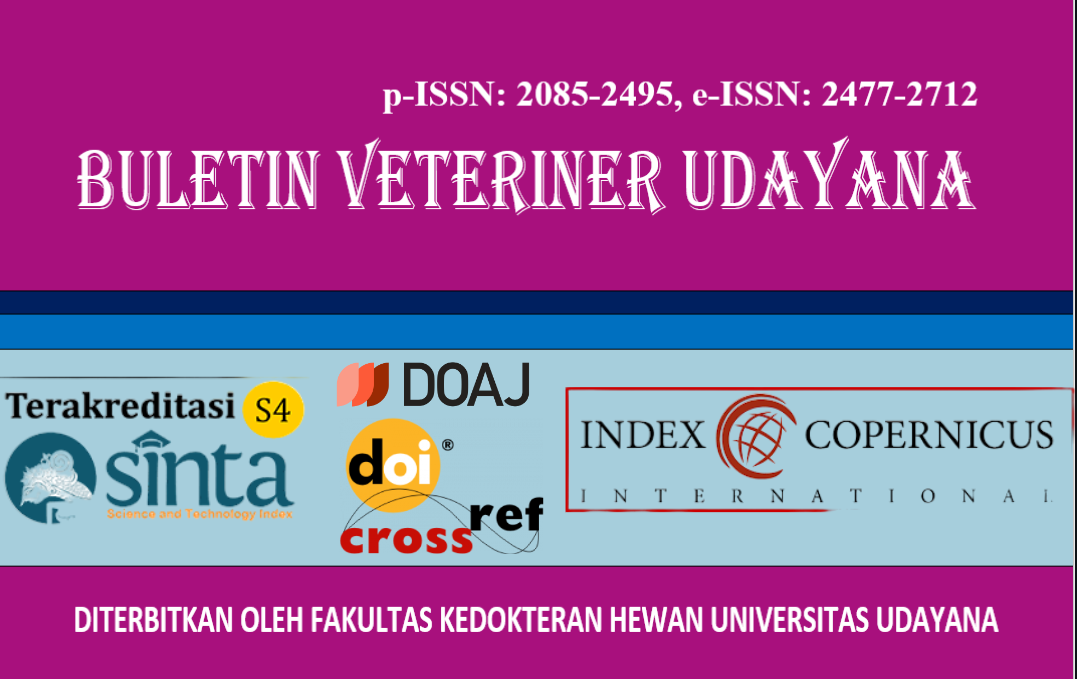PREVALENCE OF GASTROINTESTINAL NEMATODE INFECTION IN PIGLETS ON PIG BREEDING FARMS IN GIANYAR DISTRICT
DOI:
https://doi.org/10.24843/bulvet.2025.v17.i03.p19Keywords:
nematodiosis, prevalence, suckling pig, weaning pigAbstract
Nematodiosis in piglets can inhibit nutrient absorption, leading to decreased growth performance. This study aimed to determine the prevalence of gastrointestinal nematode infections in piglets during the suckling and weaning phases at pig breeding farms in Gianyar Regency. This was a cross-sectional study with a purposive sampling method. A total of 216 fecal samples from suckling and weaning phase piglets from seven subdistricts in Gianyar Regency were used in the study. Fecal samples were examined using the flotation concentration method with saturated salt (NaCl) to identify nematode worm eggs. Prevalence data were described descriptively, while the Chi-square test was used to determine differences in nematode infection of suckling and weaning phase piglets. The results showed that the prevalence of nematodes was 41.66% (90/216), consisting of Strongyl type (33.33%), Ascaris suum (14.81%), Trichuris suis (6.48%), and Strongyloides ransomi (1.38%). The prevalence of nematode infection in weaning pigs (49.61%, 64/129) was higher (p<0.05) than that in the suckling pigs (29.88%, 26/87). Nematode co-infection in piglets was also observed in this study. The prevalence of nematode infection in piglets is notably high, particularly during the weaning phase of life. Consequently, it is advisable to implement nematode eradication strategies before weaning and to repeat these measures post-weaning.




